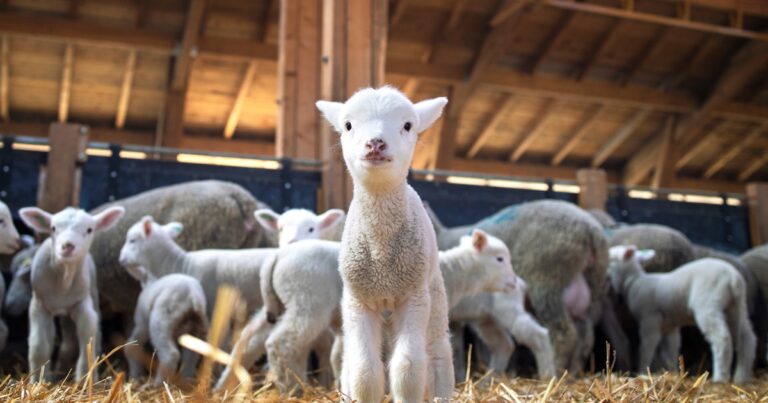
With lambing and kidding season arriving to ranches, now’s the time to guage administration and amenities for a profitable spring crop. Brent Roeder, sheep and wool Extension specialist at Montana State College, shared well being administration suggestions for lambs and youngsters throughout a current producer-focused webinar.
Sheep and goats are management-responsive, with dietary, environmental or predatory stressors opening the door to illness.
“Lots of livestock administration with sheep and goats is understanding the best way to handle the stress, particularly in lambing,” Roeder stated. “Realizing what to feed, when to feed, when to vaccinate, the best way to handle within the chilly climate, the best way to hold predators out — all of these issues play into maximizing your efficiency.”
Whereas lamb loss is rarely ideally suited, Roeder stated that it’s one thing that may’t be prevented. “It’s unimaginable to avoid wasting all the pieces, however correct amenities, diet and well being protocols definitely assist,” he stated.
Handle for greatest outcomes
Producers can typically create extra issues within the kidding and lambing barn than they will repair. “Heritable points, like massive teats or poor moms — these issues simply devour your time within the barn,” he stated. “Time is cash, and so, I inform producers don’t put up with that stuff and eliminate it.”
Crowded circumstances can herald caprine arthritis encephalitis, ovine progressive pneumonia and ovine Johnes illness, which all drain long-term earnings. “They get in your place, they get into your herd, and so they begin spreading,” Roeder stated. “Doesn’t matter what your diet is, what your well being protocol is, as soon as an animal has one in all these illnesses a vaccine doesn’t work.”
Particularly in Northern states, poor air flow can contribute to pneumonia in each younger and outdated animals. “This actually devours your short-term earnings,” he stated. “Should you’re lambing within the January, February, March time-frame in a reasonably enclosed lambing system, a barn could not have ample air flow.”
Regardless of your peak, Roeder stated it’s probably that the air you breathe within the barn is totally different than what lambs and youngsters are respiration decrease down. “You’ll want to get down in your arms and knees, put your nostril down there about 6 inches off the bottom. And a whole lot of occasions you’re going to have a robust ammonia odor popping out of the bottom,” he stated.
The ammonia can irritate lungs, which can trigger the animals to develop pneumonia as lambs or later in life.
Keep away from illnesses
Early vaccination, managing atmosphere for optimum circumstances and retaining a detailed eye on flocks will help mitigate many well being hazards for younger animals as their life begins.
“We are able to stave off scours since that’s actually managed by cleansing, liming, re-bedding and cleansing milk jugs,” he stated. “Conserving that as sanitary as potential is the most effective factor.”
Slimy mouth can happen in lambs, goats and calves, and is brought on from an e. coli an infection within the animal’s lungs. “We don’t actually understand how precisely they get it, however mainly it begins out as a transparent slime on the animal. And because it progresses, they seem like they’re drooling,” Roeder stated. “You must catch that one pretty early, inside the first six hours or so.” He added that the one method they’ve seen management with this situation is to manage Nuflor orally to animals.
Earlier than the umbilical twine seals over, it serves as a straight line for an infection into the liver. “If in case you have a lamb that’s unthrifty, pot-bellied, form of hump-backed, that’s an indication that they’d some naval unwell, and the liver has some an infection in it,” he stated. “There are a whole lot of merchandise on the market which are 2.5%, 3%, 5% iodine. However to get the naval cured and blocked off, you’ll want to use 7% iodine dip.”
Roeder stated to have a detailed relationship with a neighborhood veterinarian. “You do want a veterinary script for antibiotic feed. You’ll be able to’t simply go to the feed retailer and purchase antibiotics anymore. It’s additionally troublesome to get over-the-counter antibiotics, so you will have that prescription.”
“All people’s on the market looking for a veterinarian that’s good with small ruminants,” he stated. “They’re laborious to search out.”
He additionally stated ear and vaccine tags needs to be ordered forward of time, as many producers are seeing again orders this 12 months.